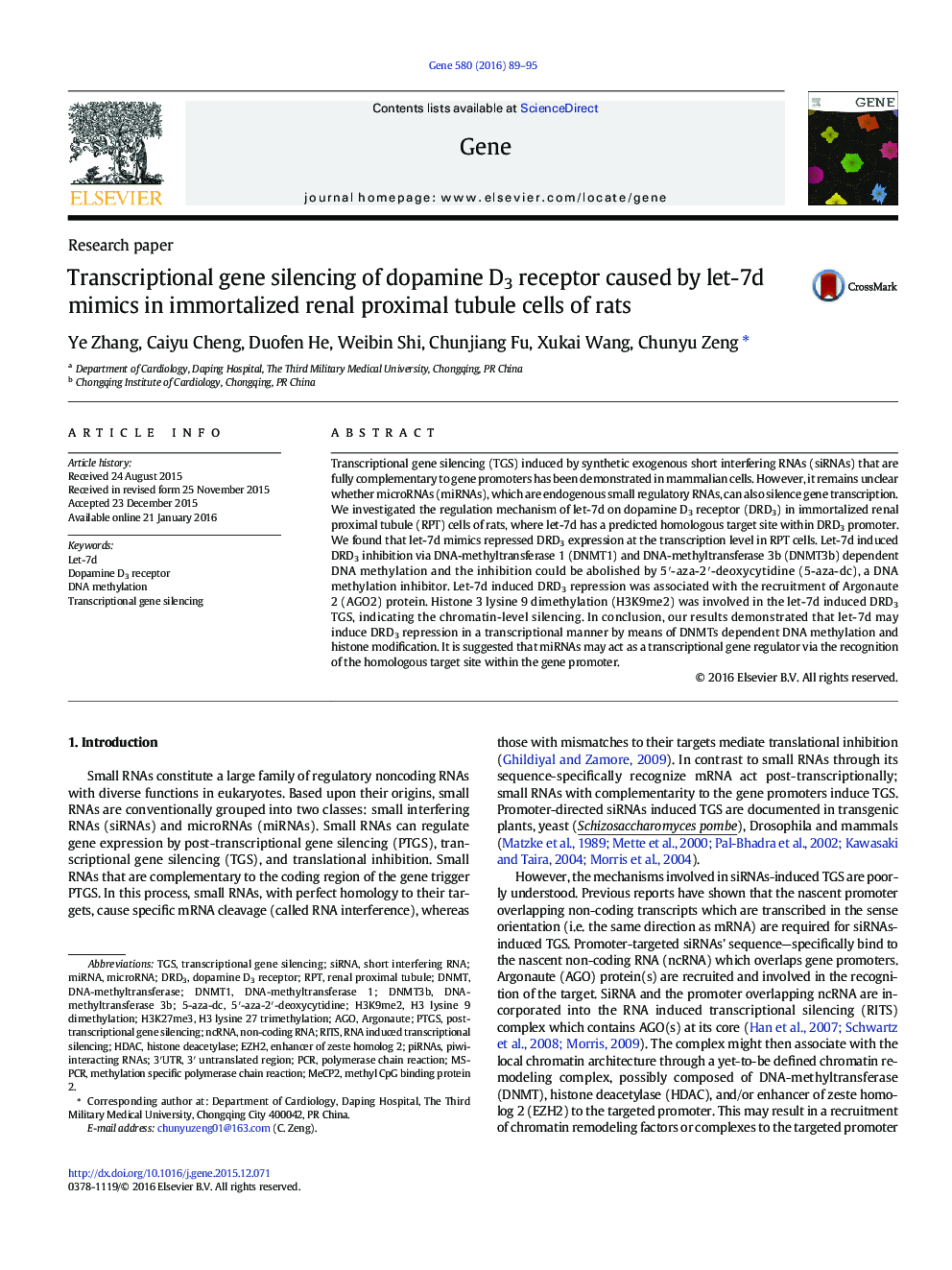| Article ID | Journal | Published Year | Pages | File Type |
|---|---|---|---|---|
| 2814935 | Gene | 2016 | 7 Pages |
•We demonstrated that let-7d mimics induced DRD3 repression in a transcriptional manner.•Let-7d mimics induced DRD3 transcription and was associated to the recruitment of AGO2.•Let-7d mimics induced DRD3 transcriptional repression via DNMT1 and DNMT3b dependent DNA methylation.•H3K9me2 is involved in the let-7d induced DRD3 transcriptional gene silencing.
Transcriptional gene silencing (TGS) induced by synthetic exogenous short interfering RNAs (siRNAs) that are fully complementary to gene promoters has been demonstrated in mammalian cells. However, it remains unclear whether microRNAs (miRNAs), which are endogenous small regulatory RNAs, can also silence gene transcription. We investigated the regulation mechanism of let-7d on dopamine D3 receptor (DRD3) in immortalized renal proximal tubule (RPT) cells of rats, where let-7d has a predicted homologous target site within DRD3 promoter. We found that let-7d mimics repressed DRD3 expression at the transcription level in RPT cells. Let-7d induced DRD3 inhibition via DNA-methyltransferase 1 (DNMT1) and DNA-methyltransferase 3b (DNMT3b) dependent DNA methylation and the inhibition could be abolished by 5′-aza-2′-deoxycytidine (5-aza-dc), a DNA methylation inhibitor. Let-7d induced DRD3 repression was associated with the recruitment of Argonaute 2 (AGO2) protein. Histone 3 lysine 9 dimethylation (H3K9me2) was involved in the let-7d induced DRD3 TGS, indicating the chromatin-level silencing. In conclusion, our results demonstrated that let-7d may induce DRD3 repression in a transcriptional manner by means of DNMTs dependent DNA methylation and histone modification. It is suggested that miRNAs may act as a transcriptional gene regulator via the recognition of the homologous target site within the gene promoter.
